The Devil’s in the Details
DmC: Devil May Cry, seen as the black sheep of the series, masters the art of visual storytelling, making it a game worth recognition
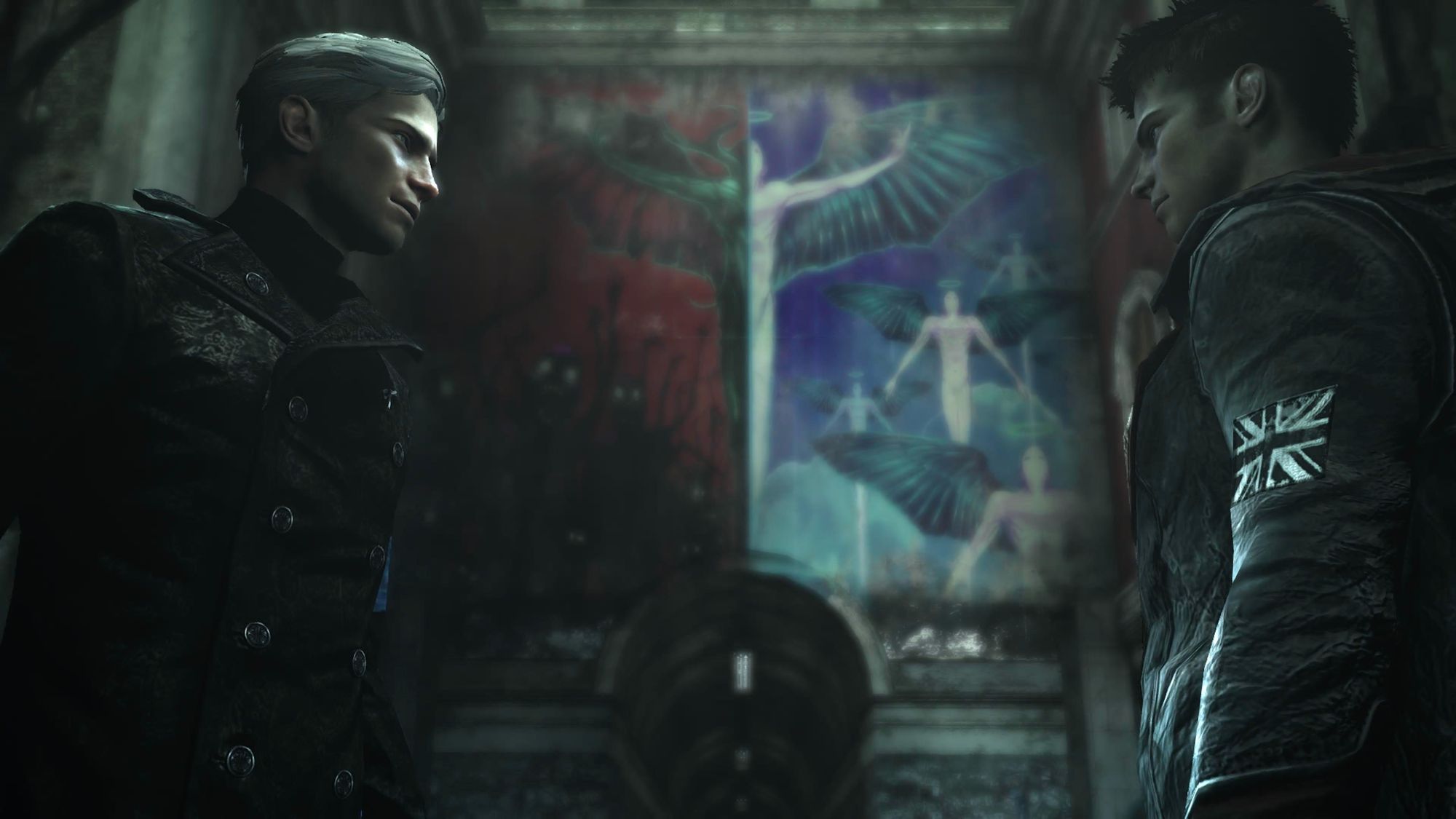
Hugging the corner of a building, an angelic figure chiseled from stone curls, its features clinging to the solid surface, head buried in the crook of its arm. However, the camera resists lingering on this celestial being, as the sprawling metropolis and towering buildings effortlessly demand and win its attention. Instead, the camera ventures into one of the massive structures, revealing a well-dressed man nonchalantly threatening the president over the phone. Amidst opulence, surveillance, and icy minimalism in shades of gray, a wall of screens flickers with live feeds of the city and Virility’s stock market growth. The only source of warmth in this otherwise chilled space is the captivating Hell Gate on display. Framed like a striking piece of art, it swirls and breathes in an array of red hues.
Within two minutes, the power dynamics of the world have been made clear, revealing a sinister relationship between the supernatural and capitalism.
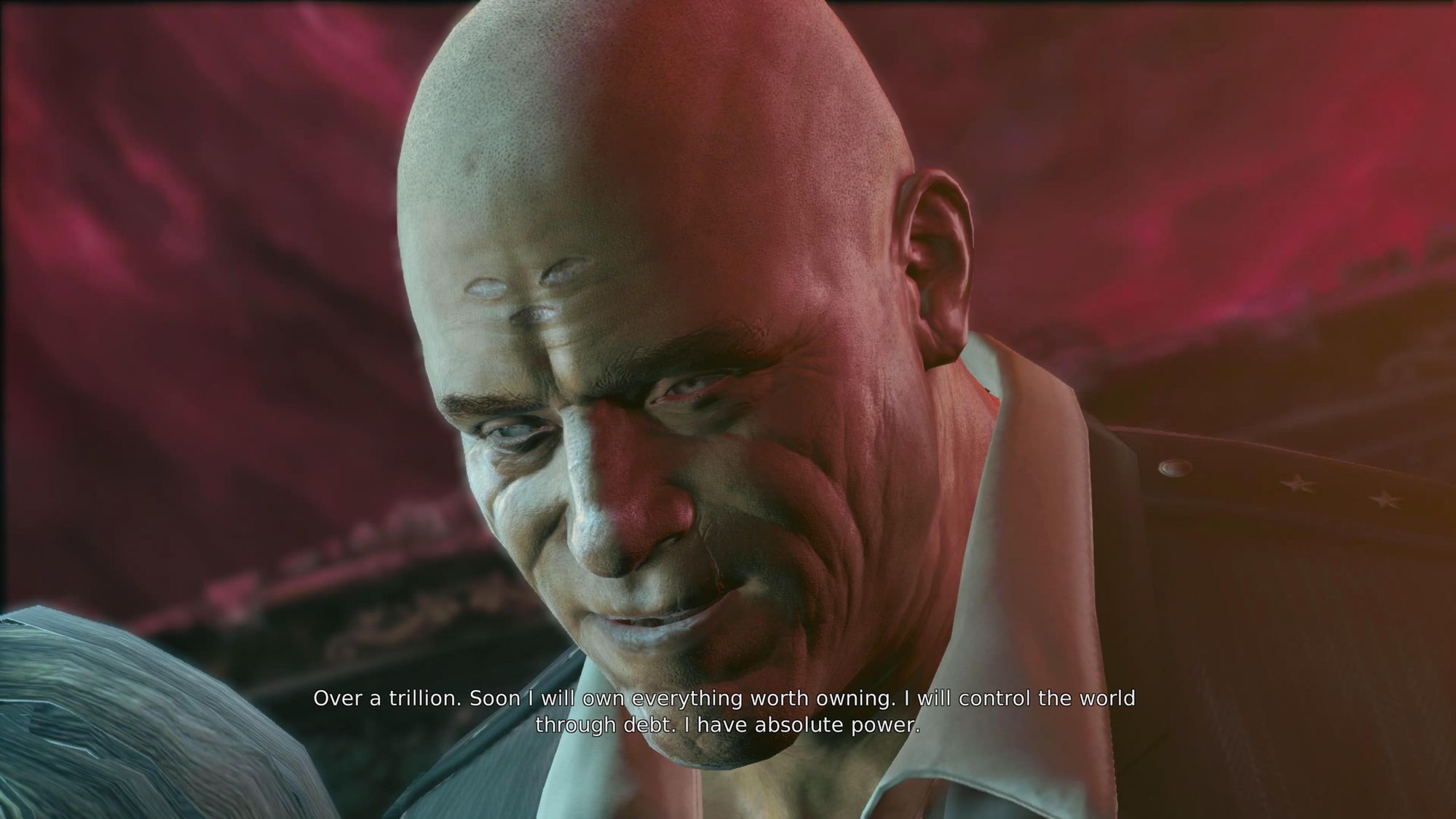
Then the focus shifts to Dante. Although he bears the same name and weapons, Ninja Theory reimagined our favorite Devil Hunter and the world he inhabits.
Dante’s life unfolds amidst match cuts and Dutch angles, engulfed in the flashing lights and thumping beats of a nightclub. As he leads a few companions to a cramped trailer settled in a theme park’s backyard, the debauchery eventually ends, revealing the truth.
Contrasting starkly with the Devil May Cry shop fans know and love and the earlier scene, this trailer exudes a sense of instability. All that stands out amongst the mess of bottles is a flickering TV screen featuring a news station reminiscent of Fox News and a golden-esque angelic statue. As Dante sits up, the statue’s wings appear to flare from his shoulders, catching the daylight streaming in from a nearby window, as if challenging the trailer’s inner darkness. Not all is lost despite Dante’s show of nihilism.
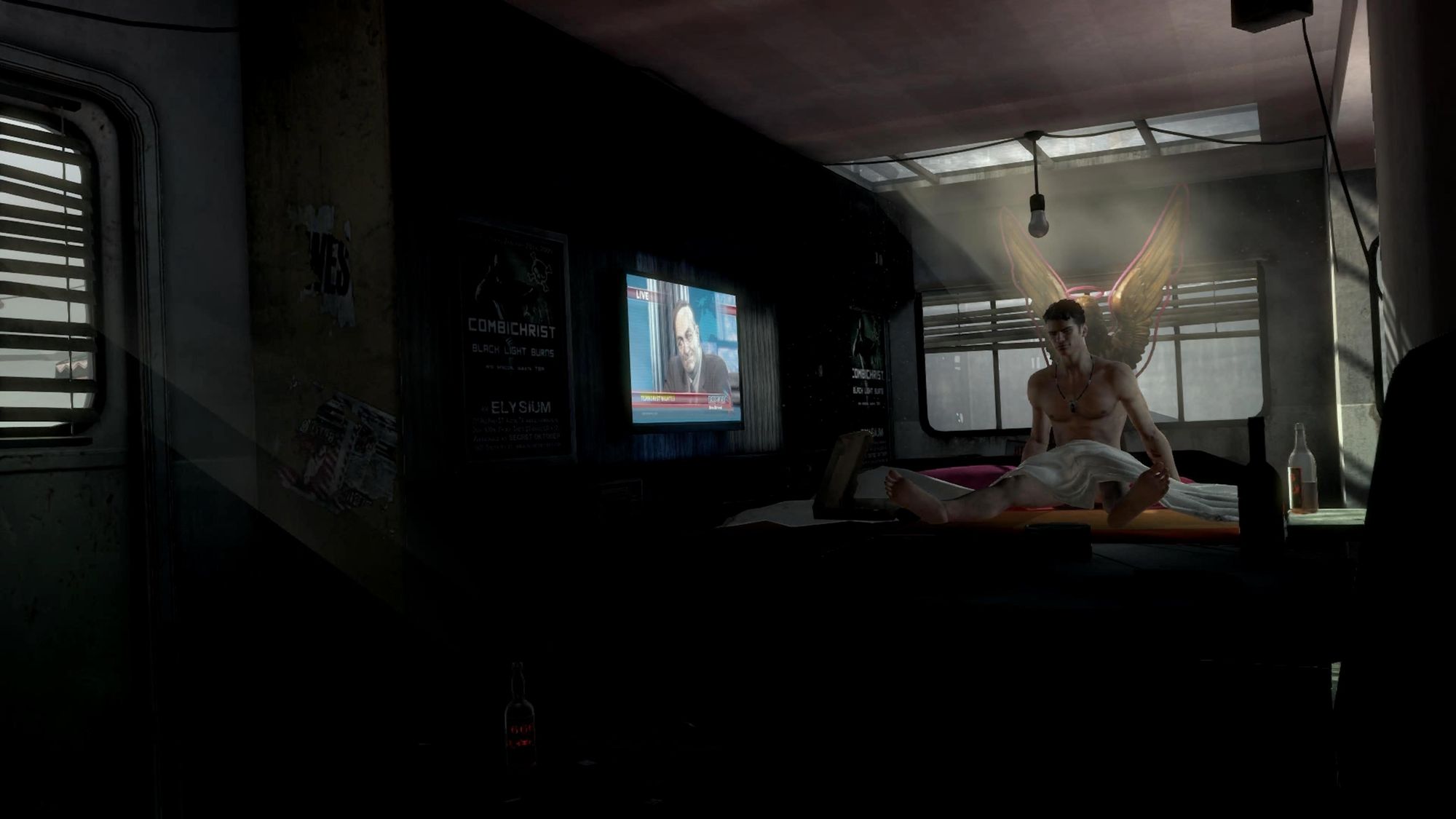
Over a decade has passed since the release of DmC: Devil May Cry (2013). Despite the controversy that surrounded the game for straying from the series’ well-beaten path, I found the reimagined tale of the Legend of Sparda and the Sparda twins to be both enjoyable and creatively refreshing. Revisiting the game after all these years rekindled my admiration for a visually daring narrative that delves into themes of classism, trauma, and the search for purpose.
To showcase Ninja Theory’s creativity and mastery of visual storytelling, I will delve deep into some of my favorite scenes and sequences from this underrated game. I'll discuss how camera angles, composition, lighting, sound, and color help to develop DmC: Devil May Cry's story, characters, and themes.
I hope these peeks into Ninja Theory’s innovation will inspire you to take that daring jump into Limbo.
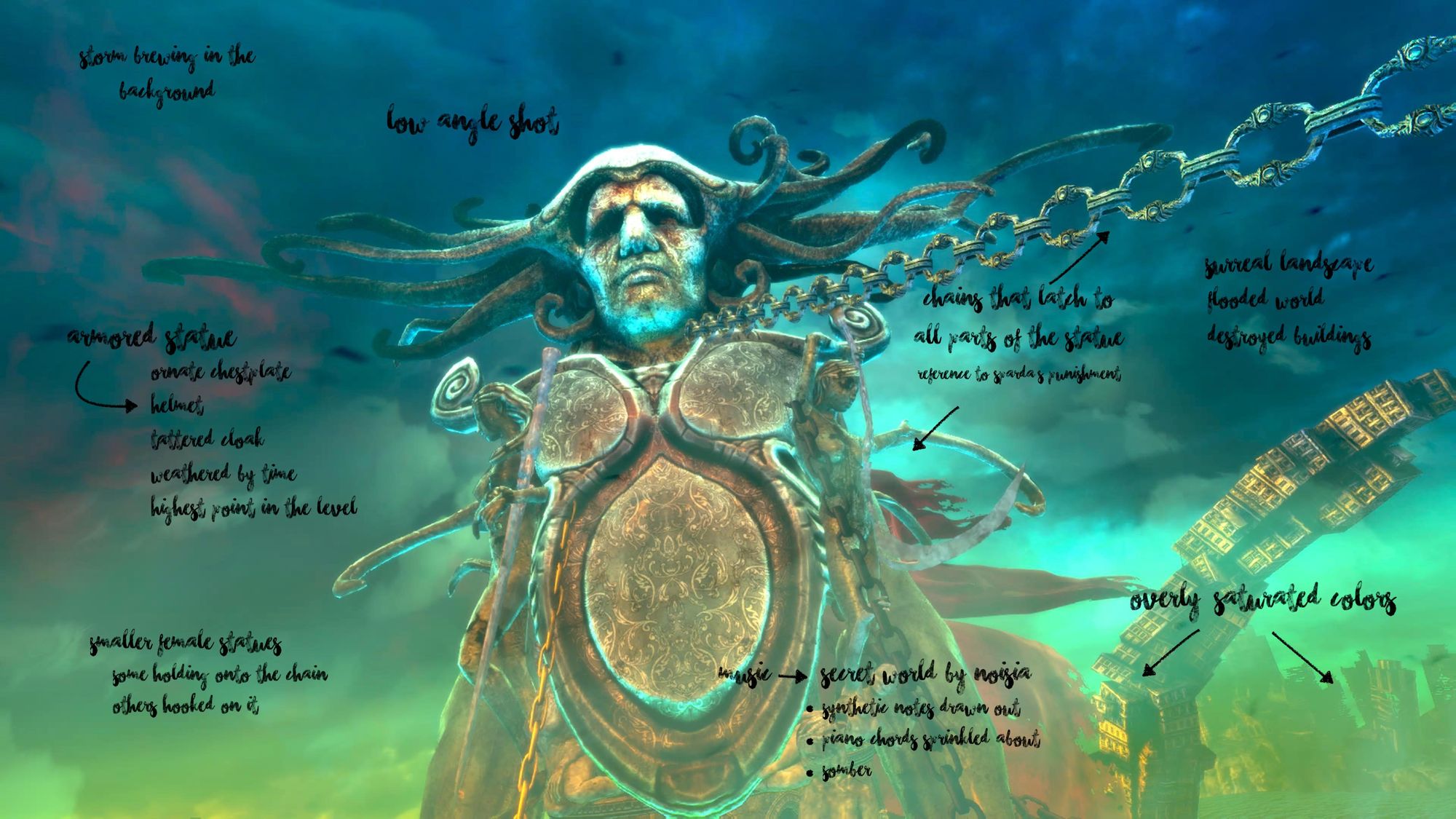
#1: 'Home Truths' - The Unshackling
Until now, Dante had been a blank canvas, purposeless and unenthused in a morally fragile world. As Dante delves deeper into his abandoned childhood home, the visuals around him take on vivid hues, drawing him into a new level of surreality—a ‘secret world’ hidden within Dante.
The sequence opens up with a low-angle shot of an armored figure, giving the impression that the audience has to look up to take in this statue. This isn’t Limbo with its furious, bleeding colors and hostile environment; instead, it offers a peek into a section of Dante’s mind that was purposely kept hidden. Heavily saturated blues and yellows swirl across the screen, broken only by rich maroons that cling to the sporadic trees that grow out of floating debris and rundown buildings.
The camera smoothly transitions into a wide Dutch angle, skillfully achieving two goals: emphasizing the statue’s immense size while hinting that something is amiss.
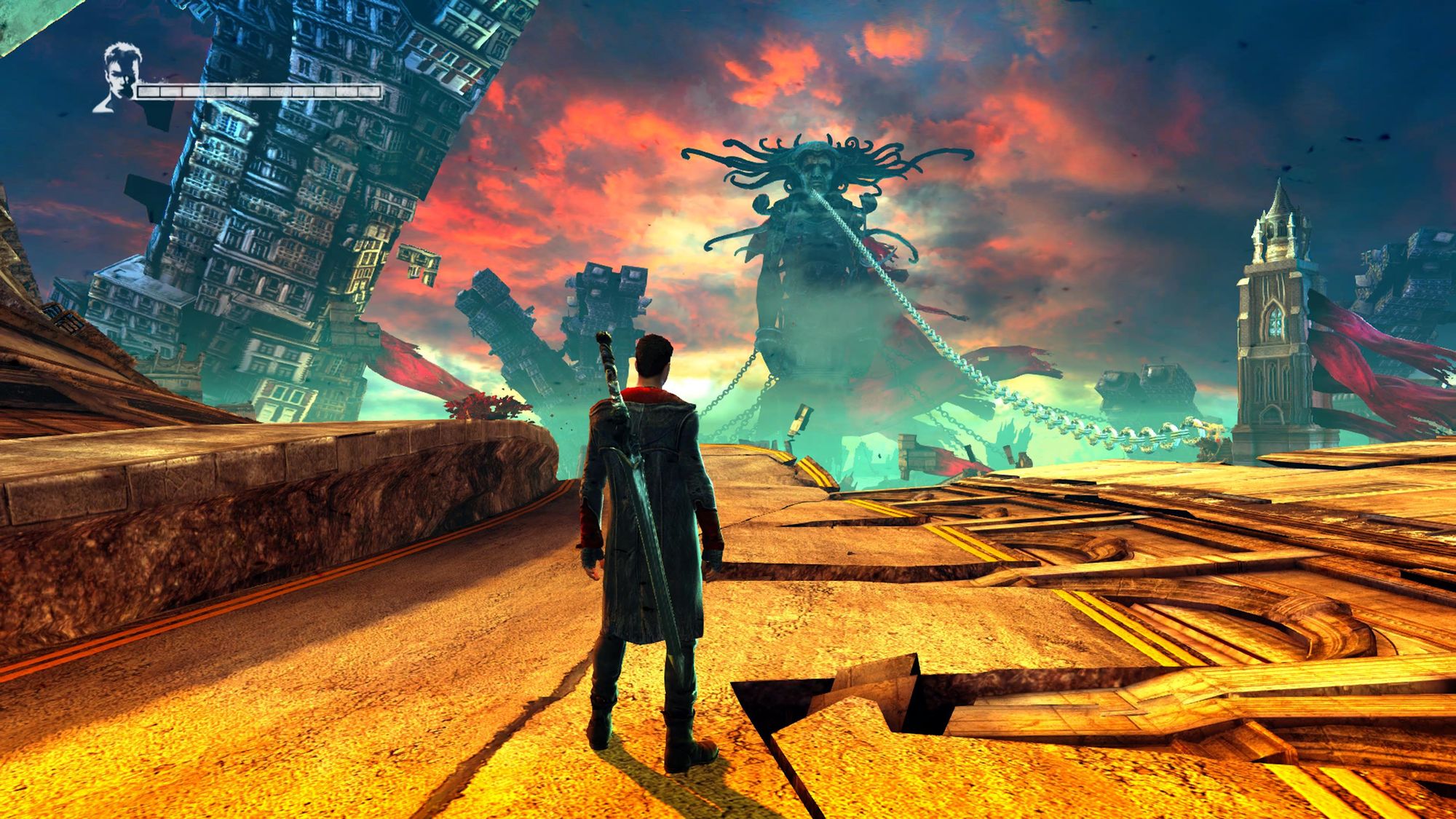
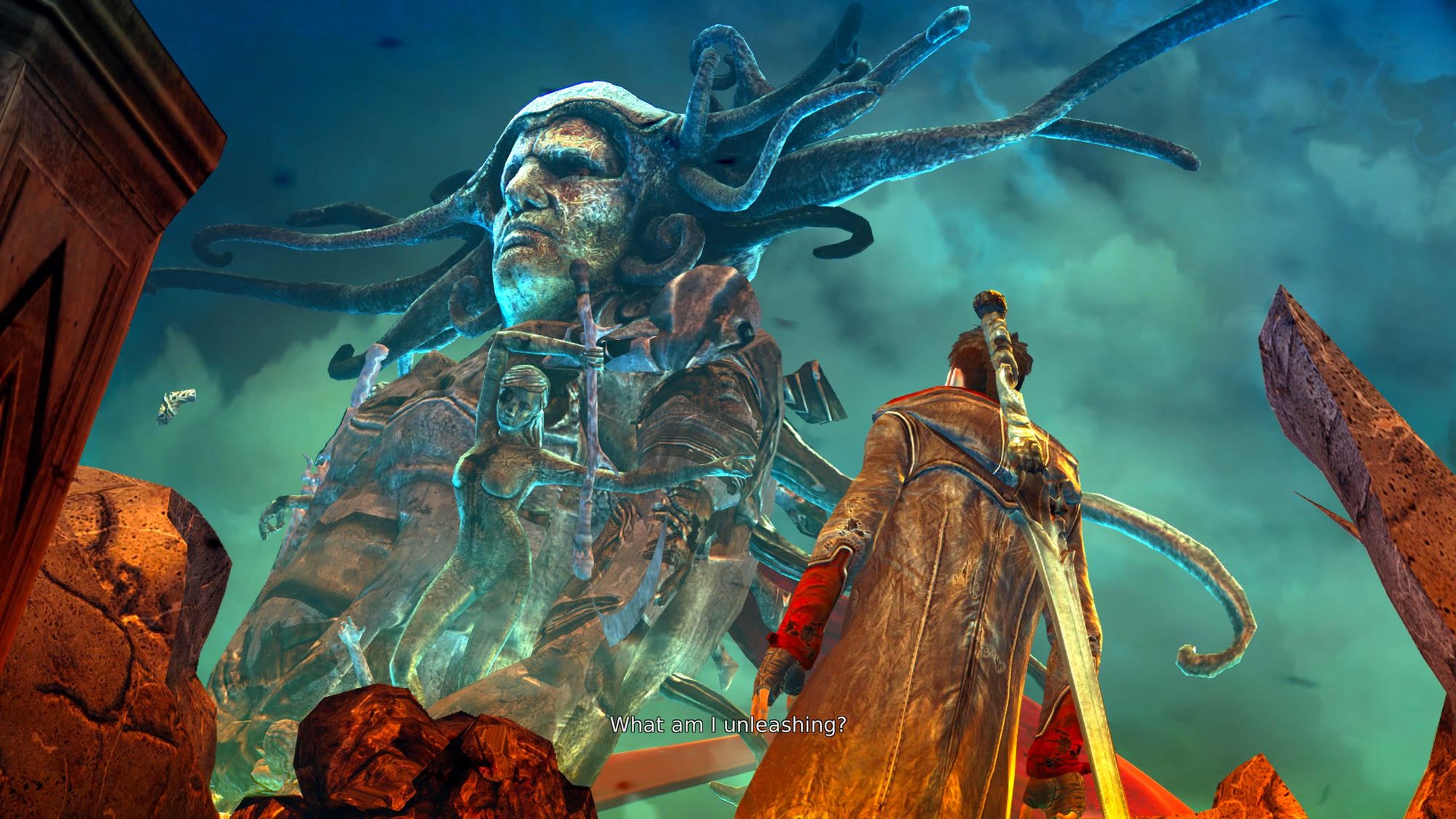
Great chains encircle the statue’s neck, wrists, and torso, some tethered to floating buildings, others to pillars rising from a submerged landscape. This over-saturated world quietly reveals itself as a somber prison, resembling a flooded graveyard of buildings. Further heightening this eerie ambiance is Noisia’s ‘Secret World’ playing in the background, featuring drawn-out synthetic thumps mixed with nostalgic piano keys. This is a place that houses endings…but today, it will serve as the beginning of Dante’s journey.
What I immediately love about this imagery is its direct nod to Sparda, even though Dante and the audience remain unaware at this point of Sparda’s fate. As the game unfolds, do we finally receive a glimpse of Sparda’s punishment by Mundus’ hands — bound by chains, condemned to eternal imprisonment in Hell. Although the statue portrays Sparda in impressive armor, the passage of time has taken its toll, leaving behind greenish-blue and yellow splotches from the corrosive water in this mindscape. These colors unflatteringly dig into the flesh of the statue, deepening frown lines and hollowing out sockets. A clever reflection of Sparda's absence, both physically and mentally, in the lives of his children.
So it comes to no surprise that Dante’s destruction of these symbolic chains carries incredible significance. This act not only awakens Dante to his supernatural heritage but also revives the memory of his father, whose stone eyes will shine with a brilliant gold as the chains finally slacken.
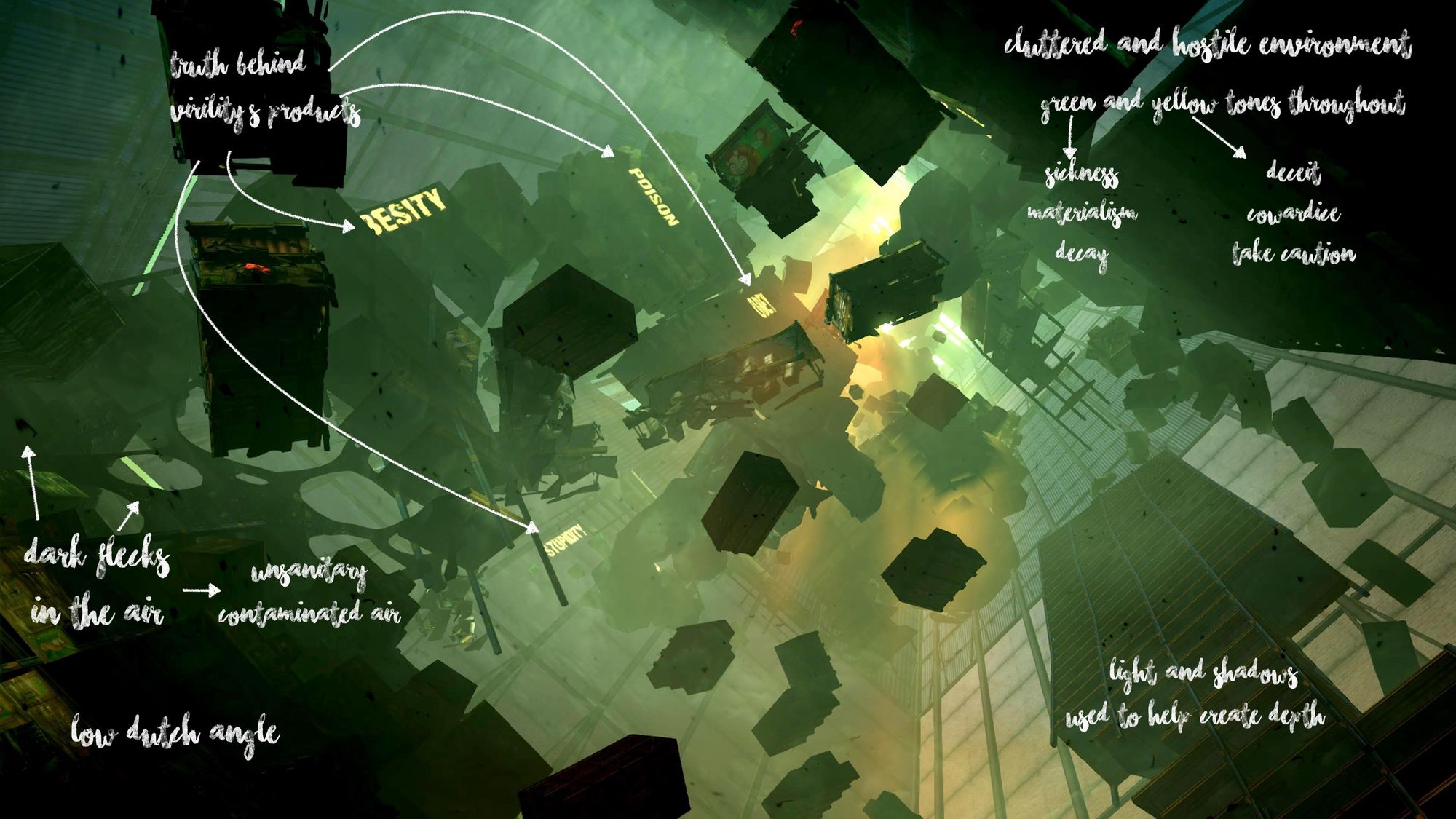
#2: 'Virility' - A Pit of Metal and Toxins
In the wealth of inventive malevolence that exists in DmC, one force that guarantees humanity’s downfall is the popular soft drink, Virility. Concealed behind its cheery slug mascot and outlandish claims the drink can “improve weight loss by 21% and sexual performance by 63%”, is something far more sinister than corn syrup. Mixed within its formula is a psychotropic ingredient extracted from a succubus, effectively dulling free will and critical thinking to all who drink it. Shutting down Virility demands infiltrating the Virility factory that wears the front of a clean, transparent company but is nothing more than a grungy petri dish.
The sequence kicks off with the camera circling around Dante, caught in a whirlwind of flying shipping containers and shelves as if they have a life of their own. They rearrange themselves in a frenzied dance before shooting upward violently, causing the ground to seemingly give way. We watch, for a second, our protagonist drop both out of the frame and from solid ground. Rather than cutting to the next shot, the camera slowly tilts upward, a tactic that unveils the colossal expanse of the Virility factory.
The camera settles into a low Dutch angle, stressing the unsettling nature of the world. A greenish haze envelops the factory, punctuated by sporadic patches of yellow towards the top. The rushing wind that comes from below brings dark flecks, making the space feel stifling. Virility factory exudes a sickness, heightened by the wavering words “OBESITY” and “POISON.” Even the illuminated letters crawl with dark veins, pumping a glowing substance that squelches and drips through the speakers—a subtle reminder of the psychotropic poison in the Virility drinks that affects the human populace.
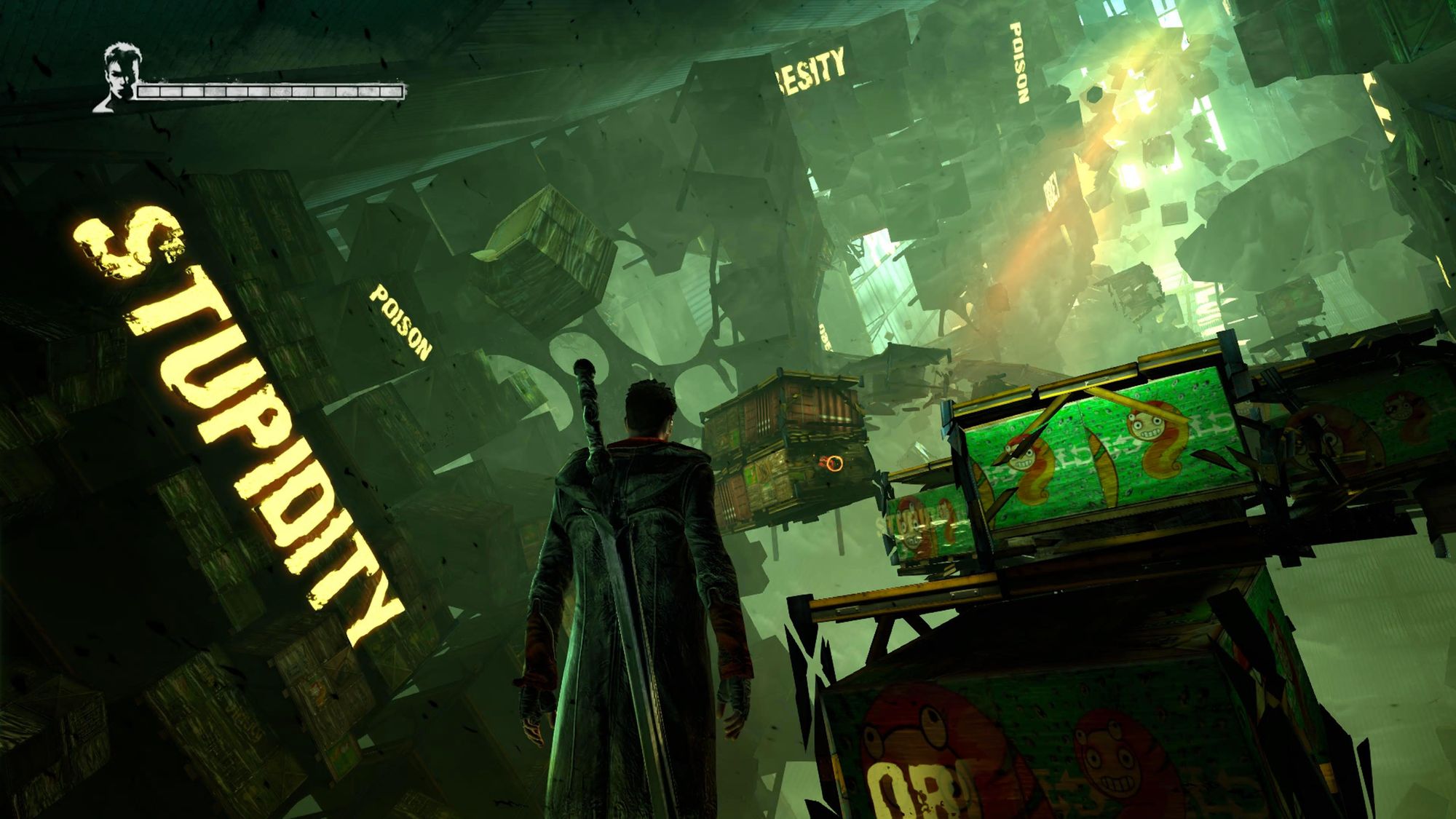
The sound design in this sequence is used in a way to accentuate the vastness of this portion of the factory, the team opting for ambient noises rather than a specific tune. As Dante undertakes the impossible climb, all that fills the air is the creaking of floating shipping containers, distant advertisements, and pulsating veins. Occasional singular notes — metallic and warped — pierce through the silence. The sound almost seems to echo through this endless tunnel of containers and the grinning images of Virility's mascot.
What I truly adore about the DmC reboot is how unforgiving the locations can be for Dante. There are no clear paths here. Some shipping containers tremble and waver, as if part of a mirage, adding to the inhospitable environment. Others rise and erode out of existence. When Date finally finds a long stretch of solid ground, crates will instantaneously stack atop each other, encasing Dante within as demons pour out. The factory will do everything it can to keep Dante in this metallic pit.
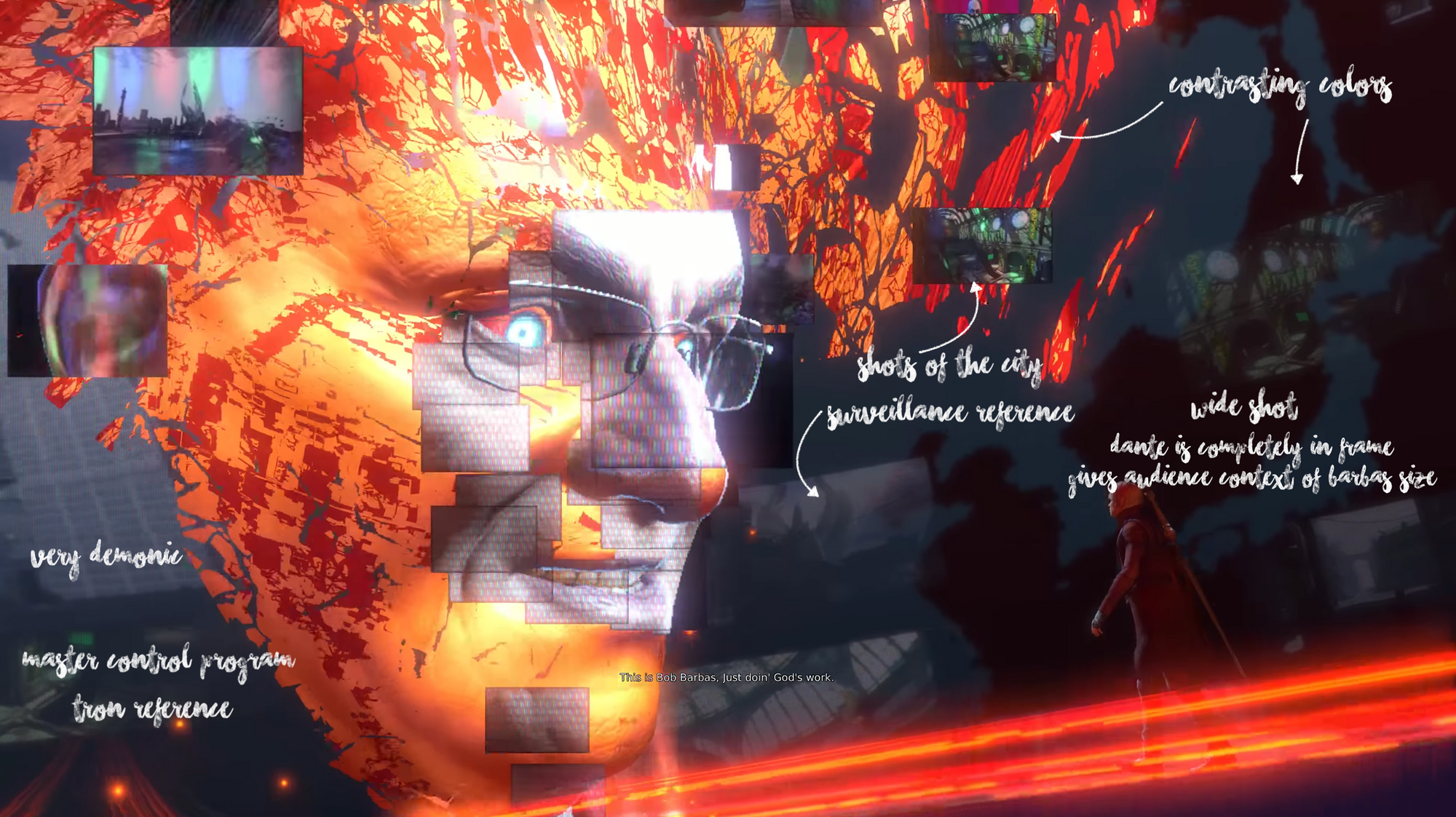
#3: 'Bad News' - A Fight with Big Brother
Crashing into Bob Barbas’ prison tower in Limbo sends Dante hurtling into Raptor News, Mundus’ propaganda machine. Dante finds himself not quite in Barbas’ news studio, but in its title screen. As the serious theme song of Raptor News plays, Dante leaps across its white borders, dodging the red logo of an eagle on a mind-bending journey. After bursting through the title screen, Bob Barbas’ true home is revealed. CCTV feeds circle the space, a reminder of the surveillance state the city is in. Bob Barbas’ digitized head suddenly comes to life, his face formed by shattered shards of red, as his distorted voice declares, ‘This is Bob Barbas, just doing God’s work.’
If you have any reservations about trying out DmC: Devil May Cry, this moment will have you pressing play. The boss battle against Bob Barbas not only delivers a visually stunning experience but also stands as a testament to Ninja Theory’s exceptional creativity in crafting immersive gaming moments.
In this wide shot, as Dante squares off with Barbas, it’s hard not to draw parallels to Master Control Program from Tron. Menacing. A vivid shade of red. A larger-than-life figure whose words and demeanor command attention. Even drawing connections to certain newscasters who resort to fear-mongering to boost ratings and stir public emotions. Throughout the story, Barbas remains a constant, using lies and manipulated video footage to twist the actions of both Dante and The Order. This fight will be no different.
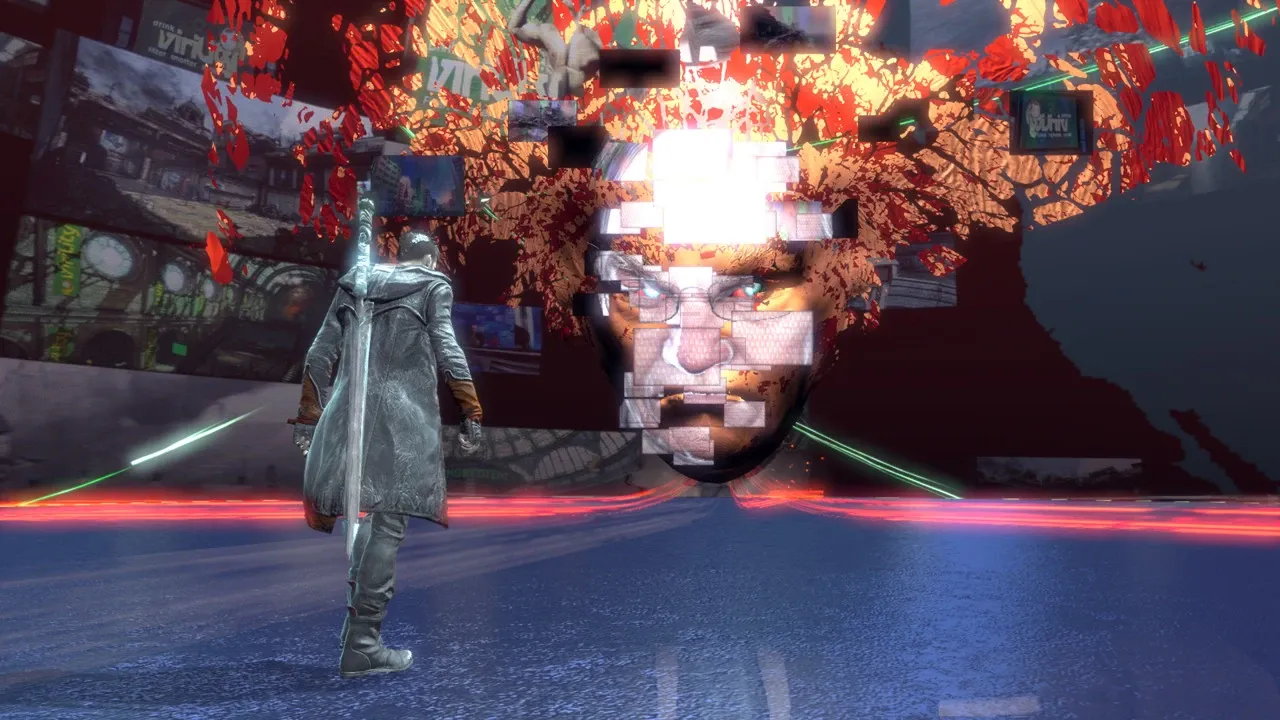
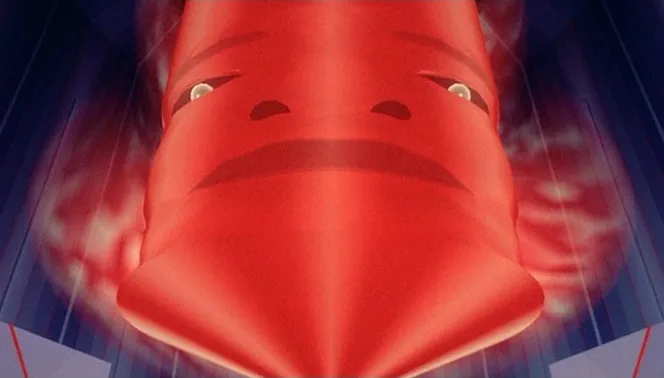
Barbas will hurl pixelated rays of energy at Dante, prompting Dante to disable his power sources. Once shut down, Barbas' image splits – he's a poorly rendered photo with eyes hollowed out and features glitching. It's incredibly satisfying pummeling his digitized head when in this paralyzed state.
The visual innovation continues when Barbas pulls Dante into old news footage, thrusting him into the chaos of the theme park seen at the start of the game. Facing a horde of demons, Dante finds himself at a disadvantage with the screen stuck in an extremely wide, overhead tracking shot. The camera mimics the POV of a news helicopter, leaving Dante appearing small and making combat more challenging.
As Dante and the audience grapple with this new perspective, Barbas seizes the opportunity to further destroy Dante’s character. Lists after lists of heinous acts associated with Dante are read out loud, the rolling text on the bottom only damning Dante further. Barbas knows how to inflict permanent damage with words alone.
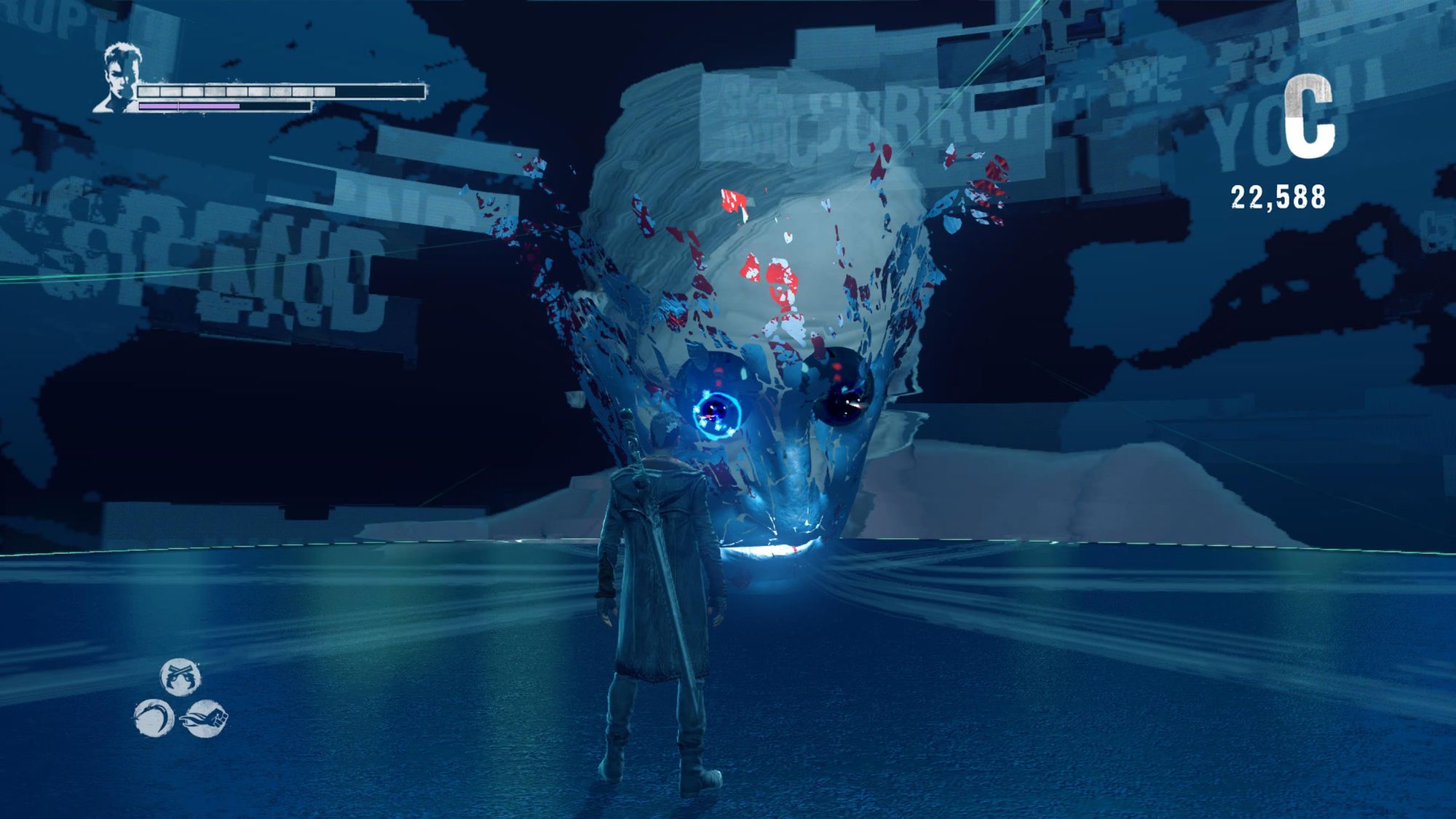
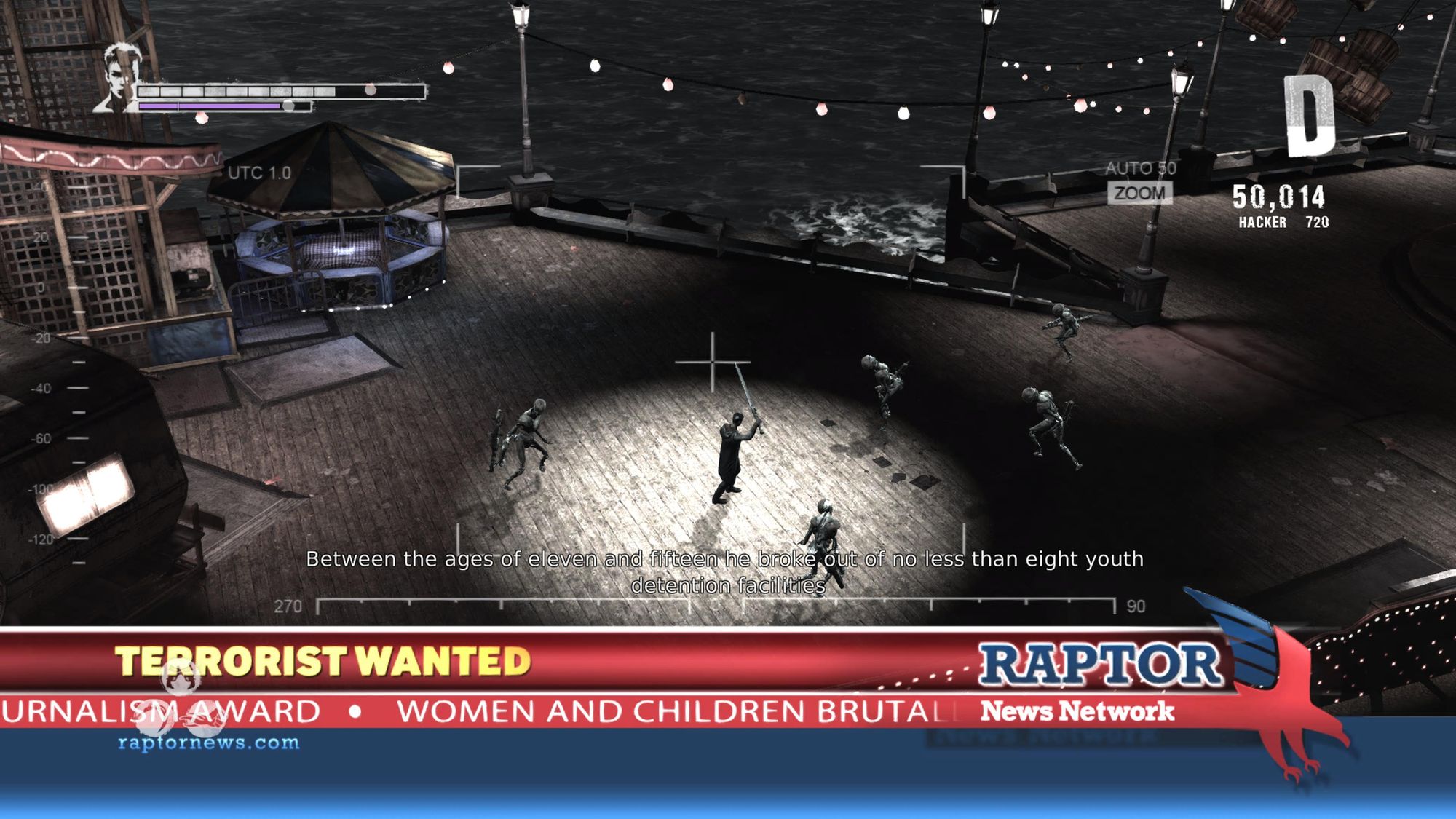
What makes Raptor News’ favorite reporter truly terrifying is that he draws upon influential figures we encounter in our world today, illustrating a disturbing truth. This is why I deeply enjoy the featured shot, as it fully encapsulates Barbas' role in the grand scheme of things. While Dante can physically strike him, Barbas is not a physical threat in the way Mundus and his cronies are. Barbas embodies the culmination of 'Big Brother is watching you', propaganda, and buzzwords, all masterfully displayed. It's why defeating Bob Barbas and Raptor News feels like a hollow victory. After all, how does one undo the brainwashing of an entire city?
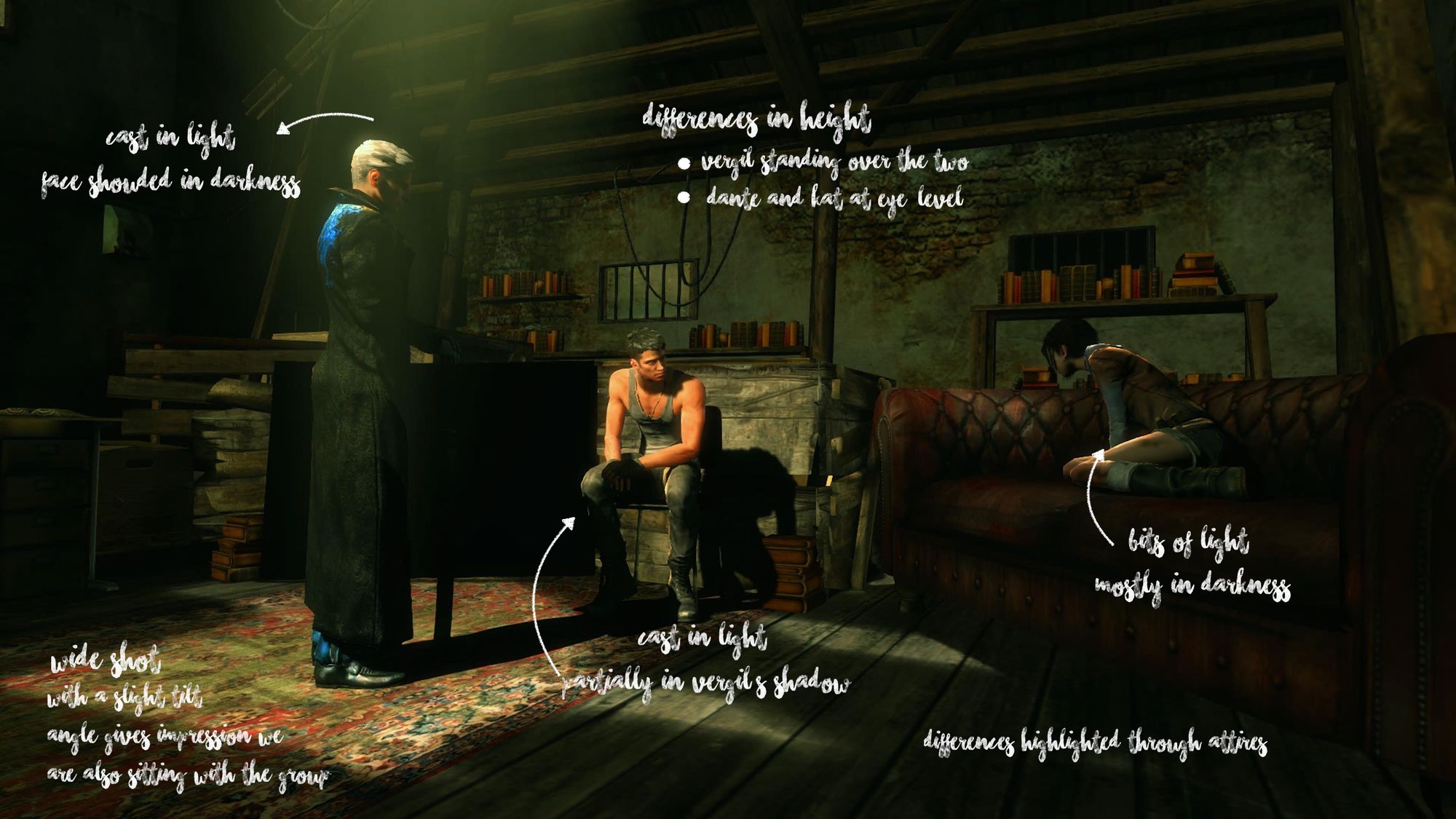
#4: 'The Plan' - Humanity vs. Brotherhood
As a self-proclaimed Vergil fangirl since Devil May Cry 3’s release, I found the new twist on Vergil’s character to be an absolute delight. While Dante softens to humanity, Vergil seems to edge closer to absolute indifference, making his eventual downfall even more bittersweet. The shot above captures the moment when Vergil’s dream crumbles, too absorbed in his chess-player mindset to realize it.
To analyze this shot, I must go back to when Vergil falls in love with the idea of reunited long-lost brothers working together after the "Home Truths" mission. Here we see Vergil break character, barely able to contain his happiness when Dante shows interest in them as a family. He flashes Kat a smile as Dante turns his back on them. We'll hear friendly banter play between them throughout the game — they are brothers reunited, making up for lost time. However…Vergil isn’t the one Dante is meaningfully connecting with. It’s Kat.
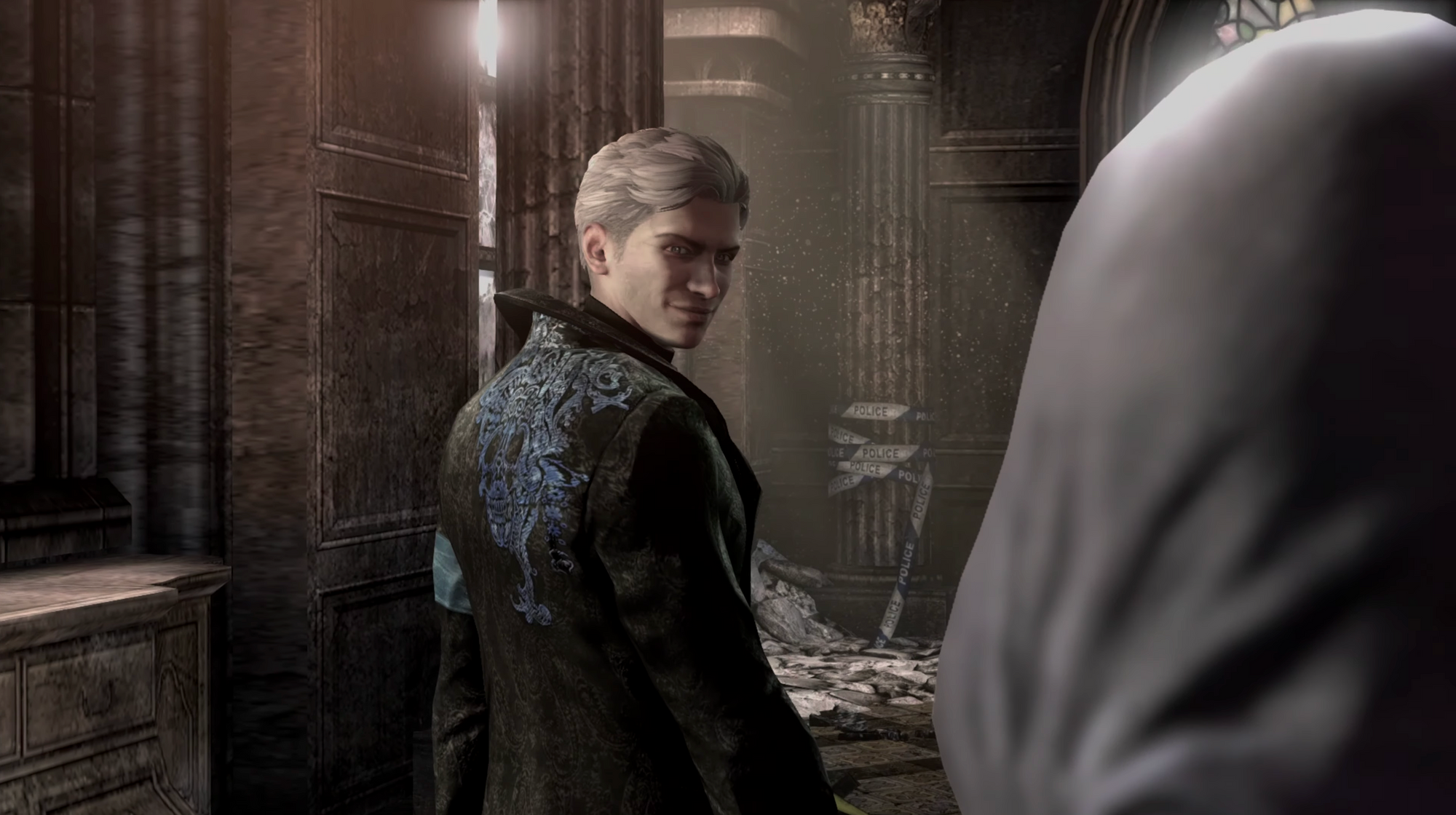
Kat, this representative of humanity, is the one who peels away Dante’s indifference toward people. The two grow comfortable being vulnerable with each other, sharing past hurts, current worries, and hopes. It’s Kat who helps nurture Dante's drive to protect humanity.
As Vergil and Kat prep Dante to storm Bob Barbas’ tower in “Overturn,” he witnesses their dynamic. As Kat shares her worries about the mission and looks at Dante with concern, the camera cuts to Vergil watching her. A lens flare lives between both Vergil and Kat’s faces, partially obscuring slivers of their expressions, but Vergil’s displeasure is clear. Lens flares, while popular in the film industry, are nothing more than technical errors in filmmaking. To see it digitally appearing between the two marks the moment when Kat is viewed as a mistake in Vergil’s grand plan and reveals a certain possessiveness toward both Kat and Dante – Kat, who reveres him and is a follower in the movement he has created, and Dante, his sibling.
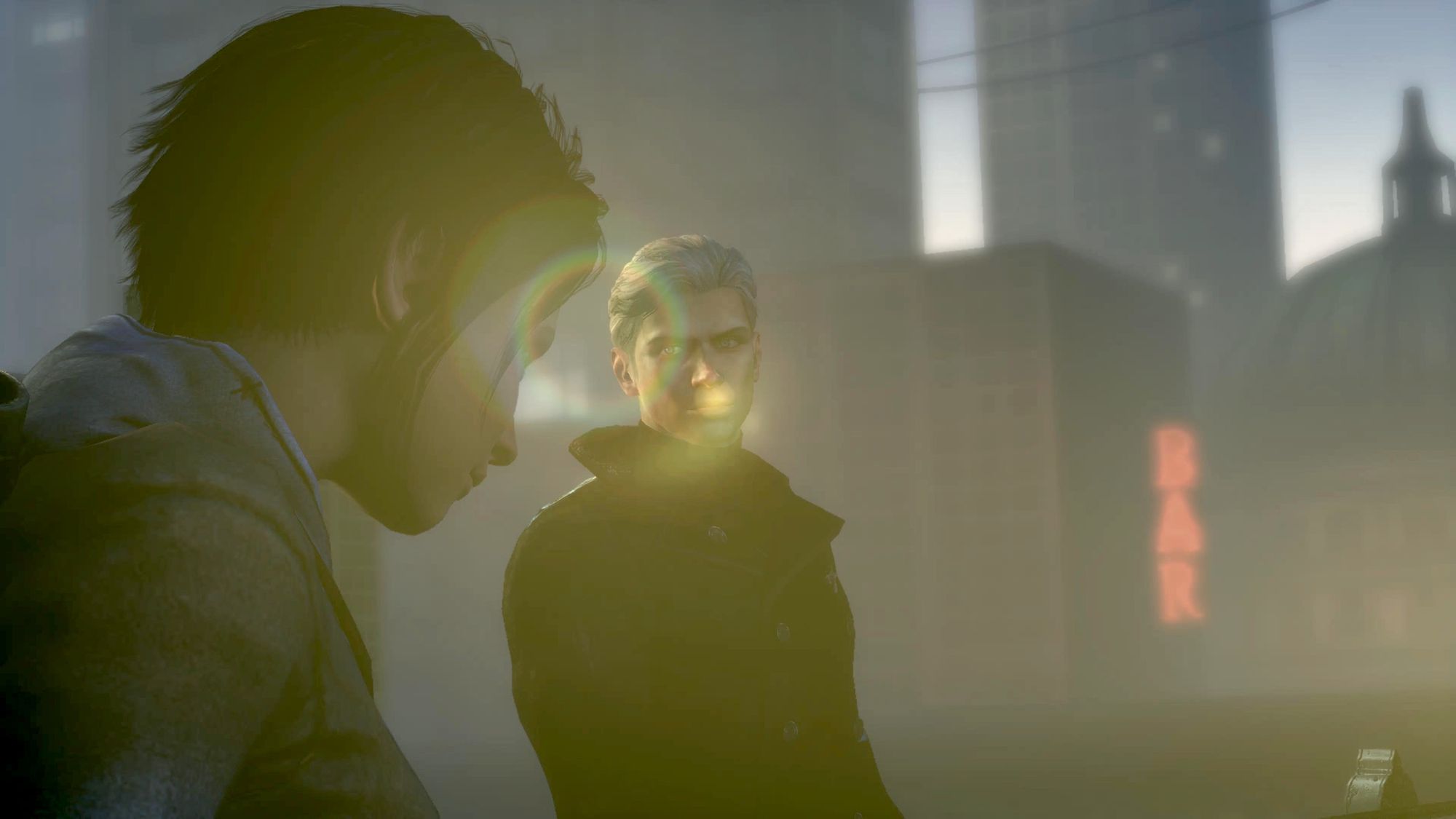
This brings us to the shot that was introduced earlier, a wide shot of our three protagonists in a dusty safe house, nursing their wounds after Mundus’ recent attack on the city. The camera positions us as observers as if we are sitting on a chair just out of frame. Amongst us all, Vergil stands tall, bathed in natural light that highlights the blue embroidery on his jacket — a flash of color existing in an otherwise dull environment. This use of lighting and blocking exudes Vergil in control — confident even after the chaos his actions caused just moments ago. He stands in a position where he is needed by the two of them.
What’s notable is Vergil’s belief that Dante will continue this journey with him, clear by the way the natural light Vergil soaks in simultaneously cloaks part of Dante. However, the irony lies in the shadows cast over Dante, made up of Vergil’s shadow — a visual tell that their brotherly reunion will come to an end.
On the note of differences in height, the camera positions Kat and Dante at eye level, demonstrating their mutual respect and equal footing in their relationship. Meanwhile, Vergil stands above them, looking down, subtly suggesting his sense of superiority over both, despite his affection for Dante.
Final Thoughts
The line between movies and video games continues to fade, and DmC: Devil May Cry stands as a perfect illustration of how cinematic artistry can thrive within an interactive framework. Ninja Theory’s decision to use the screen as a dynamic camera, engaging with the world and its characters, played a key role in crafting a multi-dimensional environment and characters. The composition, lighting, and specific camera angles do well in revealing details of the world without being overwhelming.
While there are sequences that are on the nose with the exposition of the world and its characters (seen in the first image presented in the article), Ninja Theory really shines in subtle visual storytelling. Picking the above sequences/scenes was difficult, as there is just so much to say within each mission.
There isn't enough praise for the camera's ability to capture characters' expressions or the juxtaposition of Vergil's impeccable attire (ignoring the fedora fiasco) with Dante's tattered clothing, or how the strategic camera angles unveil power dynamics, or the surreal color pallete when in Limbo, or – as you can see, my praise for the game's visuals are endless. Ninja Theory's eye for detail within each mission helps create a visually rich world.
It must be mentioned, while not explored above, how the game ventures into other artistic territories, like integrating gritty comic-style panels and oil painting-inspired depictions of characters' histories. These nuances and daring aesthetic journeys that coat the entirety of the game are just a few of the many reasons why this reboot continues to have an enduring influence on my gaming journey.
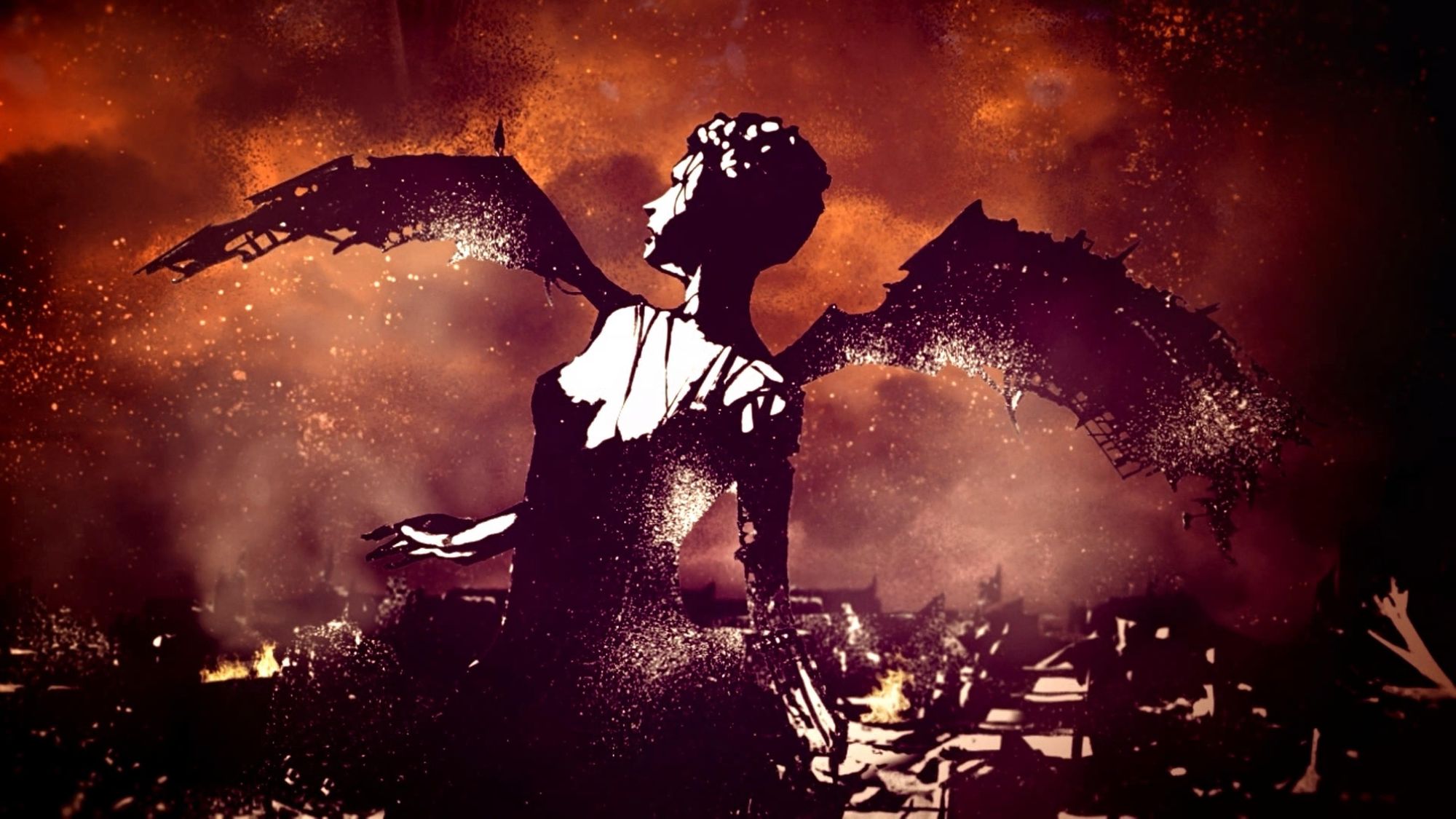
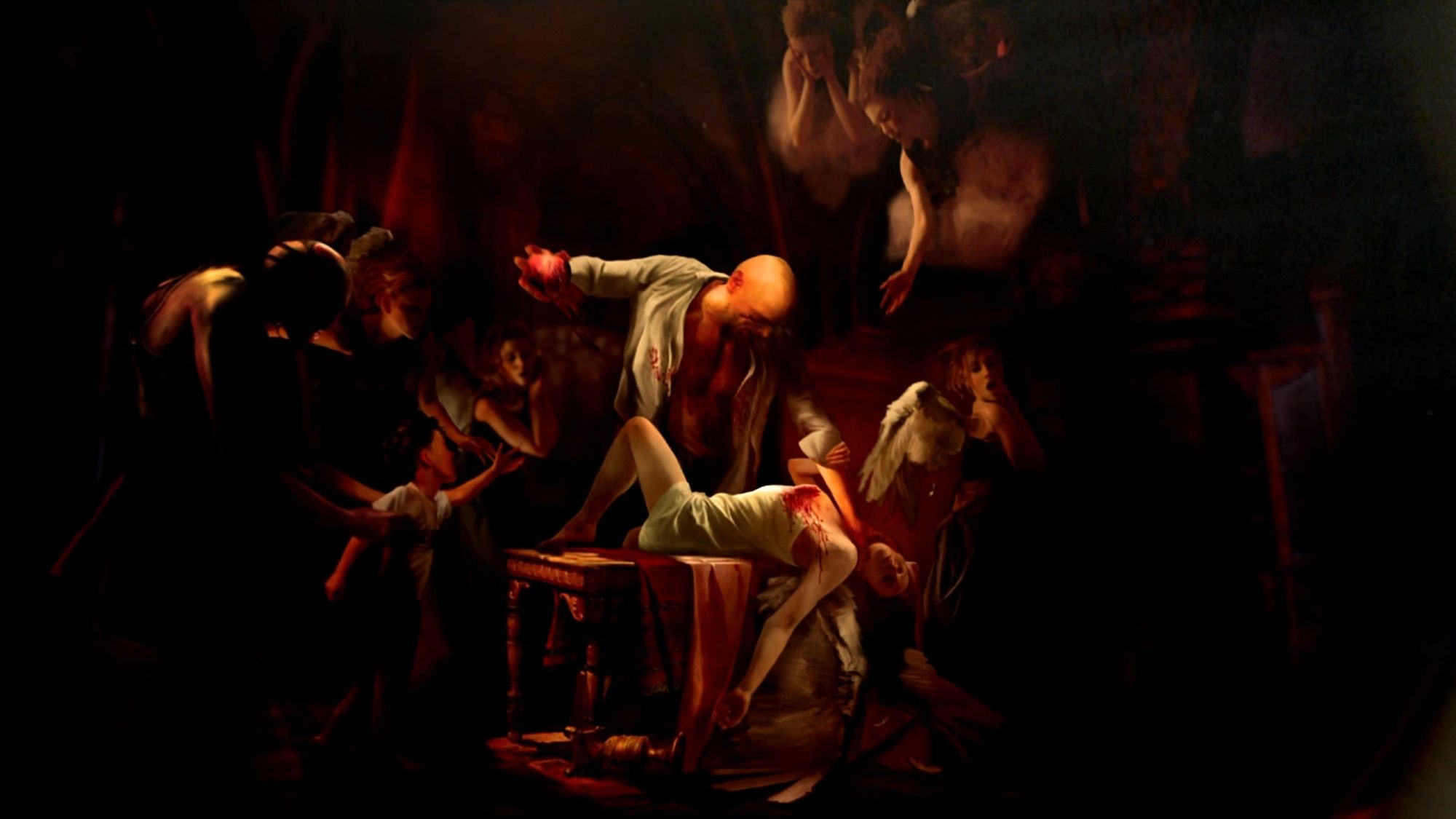
If you’re ready to immerse yourself in a vibrant and visually risk-taking world, I encourage all players — those unfamiliar and familiar with the Devil May Cry series — to take the plunge. However, as you navigate through Limbo, keep your eyes peeled. It’s not only chock full of demons ready to catch you unaware, but visual marvels you wouldn’t want to miss.
